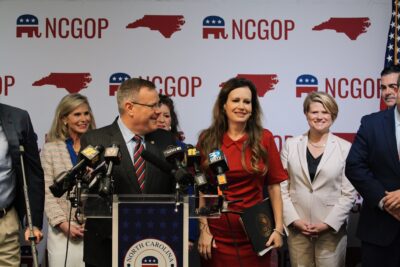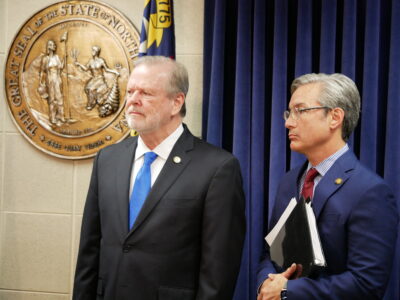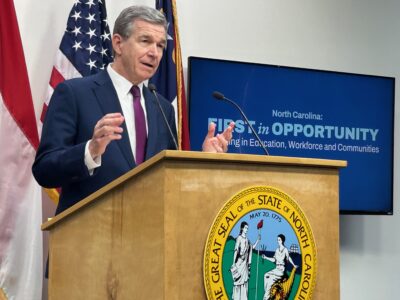
Share this story
|
|
As school districts nationwide face a federal funding cliff, government researchers from independent think tanks around the country met in Worcester, Massachusetts to discuss how municipalities and states are preparing.
Since 1914, the Governmental Research Association has been connecting researchers from across the country working to improve their communities, according to their website. The Worcester Regional Research Bureau hosted the GRA’s annual conference.
During the pandemic, the federal government issued three tranches of funding totaling $190 billion for school districts. Districts spent this money on everything from one-time costs like HVAC upgrades to recurring costs to address learning loss and the wellness of students.
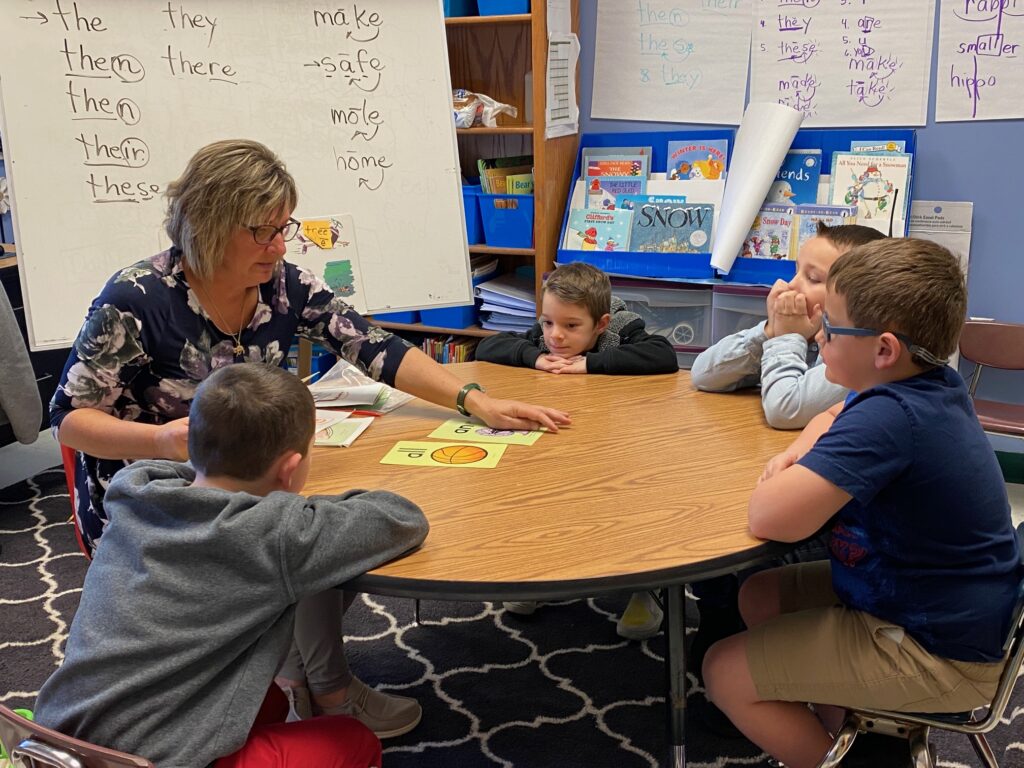
The last round of funding must be committed by Sept. 30, 2024 – just a little more than a year from now.
Districts can request 18-month extensions on spending the funds, and even longer in extraordinary circumstances, according to this letter from the U.S. Department of Education to AASA, The School Superintendents’ Association. But for most districts, the cliff is looming large.
It’s the loss of federal funding for recurring costs used to pay educators serving students that has researchers nationwide concerned. When these federal funds go away, districts will either have to get the funding from other sources or cut back.
A report issued in March 2023 identified 15 states facing the most complex challenges with the cliff. North Carolina is one of them.
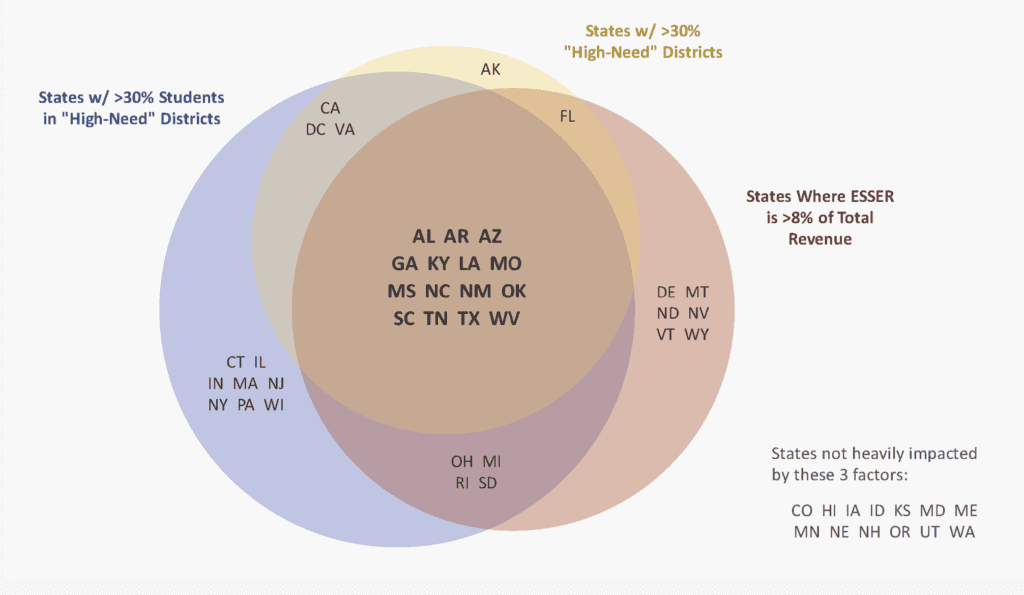
Massachusetts has a statewide strategy to increase funding for schools that should help districts cope with the federal funding cliff.
In the months ahead of the pandemic, Massachusetts was preparing to implement the Student Opportunity Act, a school funding law passed in November 2019.
“COVID derailed the first year of the plan,” said Colin Jones, a senior policy analyst for Massachusetts Budget & Policy Center. “In the beginning, it wasn’t clear – particularly for the low–income districts that were the targets of the reforms – that they were going to get more federal aid than they were losing by delaying the plan.”
“There is a false narrative,” Jones said, “that districts are sitting on piles of cash.”
That narrative is complicated by the fact that Massachusetts hasn’t passed a state budget for 2023-24 even though the fiscal year started on July 1, he said.
“As ESSER fades away, we have to go back to where we were heading,” Jones said. “States have to assume they are on their own.” He noted that the toughest part of the conversation for states that want to proactively address the cliff is where the revenue will come from.
Alexis Lian is the director of policy for the Rennie Center for Education Research and Policy, which is part of EdImpact, a research consortium “designed to support evidence-based spending, analyze the impact of COVID recovery funds, and provide a platform for the field to learn from one another and reflect on progress made.”
EdImpact launched 24 data dashboards for districts in Massachusetts showing planned investments of the federal funding, finding investments focused on academic recovery, including high-dosage tutoring, acceleration academics, and high-quality curriculum; and on social emotional and mental health, including implementing Tier 1 of the Multi-Tiered System of Supports (MTSS), SEL curriculum, and mental health literacy.
Lian said of those they surveyed, “90% of district decision makers cited challenges deploying stimulus funds.”
For comparison, McKinsey surveyed 260 school districts nationwide to see how they deployed federal funding.
As of July 2023, Lian said in Massachusetts, all of ESSER I funding has been committed, 82% of ESSER II, and just 33% – $1.1 billion – of ESSER III.
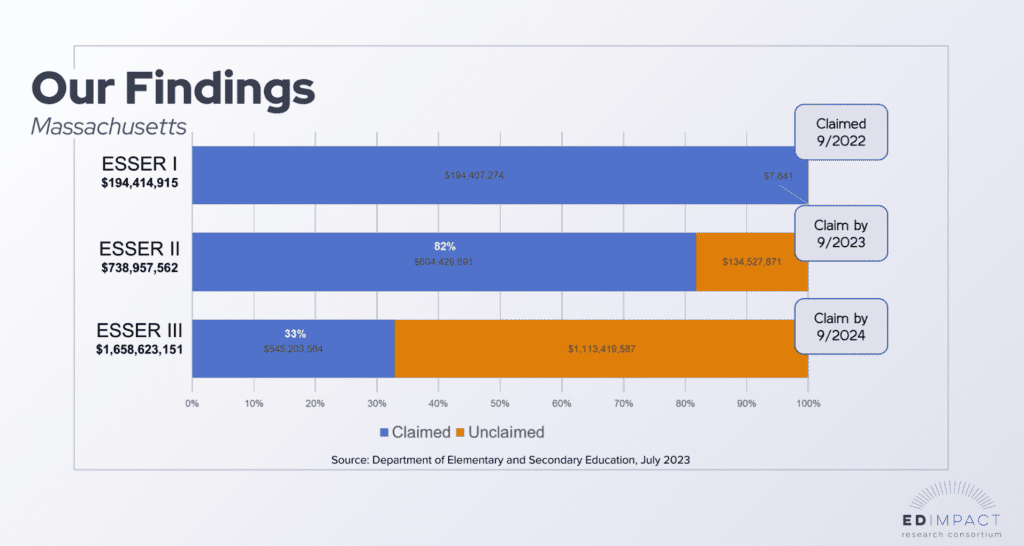
“There is an enormous amount of money to still allocate,” said Lian. “Districts are working incredibly hard to make really difficult, strategic final decisions.”
Based on their work with districts, EdImpact issued six takeaways for investing the remaining funds, including a coordinated statewide approach to prioritize investments that impact students and can be scaled.
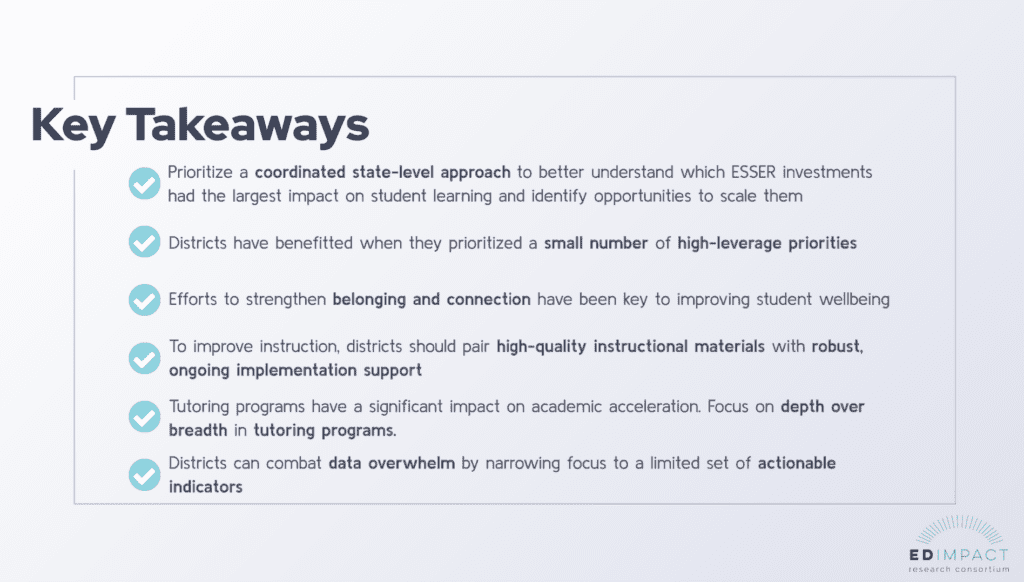
In Wisconsin, Jason Stein, the vice president and research director for the Wisconsin Policy Forum, said “one important learning from the Wisconsin experience is that as legislation like ARPA gets debated at the federal level, it can still play out at the state and local level in very different ways from the original intent.”
The federal legislation authorizing funding contained a maintenance of effort provision intended to keep states from reducing their support for public education.
Stein said his state has revenue caps that limited the revenue districts could receive the last two years, so there was no increase in state funding.
“It was in reaction,” said Stein, “to a perception that districts were getting so much federal money that there was no need for the state to do its typical funding.”
Many districts in Wisconsin went on to pass referenda, Stein said, with voters opting to raise their own taxes to increase school funding.
Making national news, the governor in Wisconsin – currently Democratic former teacher and state superintendent Tony Evers – used his partial veto power and some ingenious editing of the proposed state budget to institute a $325 funding increase per student for the next four hundred years through 2425.
While the GRA was meeting in Massachusetts, North Carolina State Superintendent Catherine Truitt was testifying at a U.S. House hearing, during a workforce subcommittee titled, “Generational Learning Loss: How Pandemic School Closures Hurt Students.”
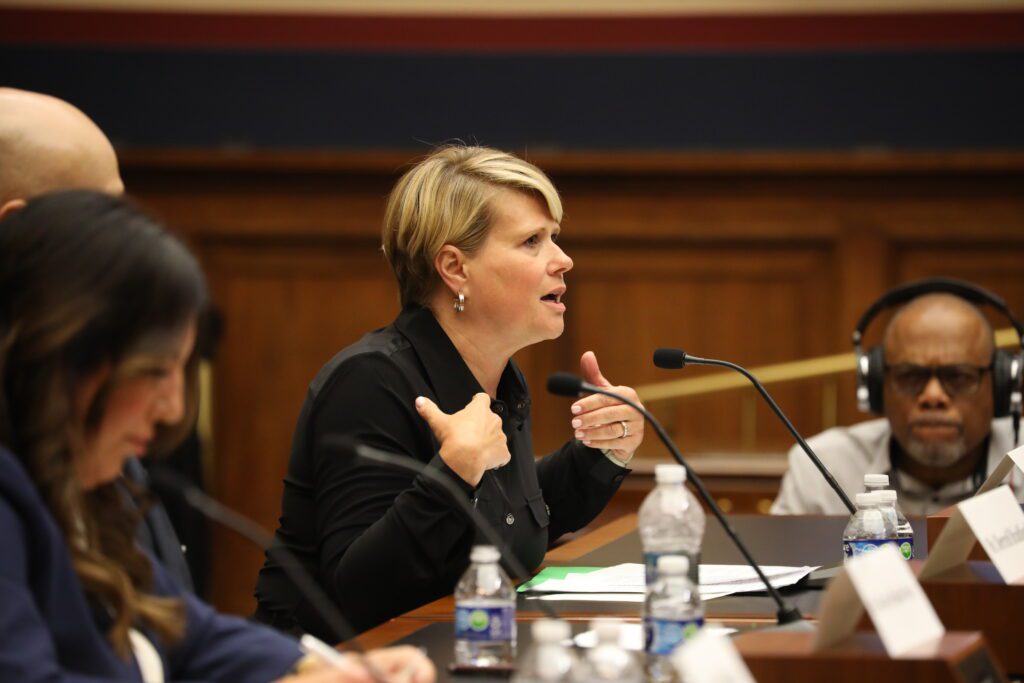
“Taking a scattershot approach and just investing in programs that may or may not improve learning outcomes for students, in my opinion, was not an option,” Truitt said. “We were able to then tell districts, ‘Here is what we suggest you spend your ESSER dollars on, and here are some vetted resources we think would match up best with what your students need.’”
EdNC is looking at district fund balances, which operate like savings accounts, and public school foundations in Durham and Charlotte as tools for districts to cope with revenue pressure whatever the cause from the federal funding cliff to the anticipated expansion of school choice.
An actual boots-on-the-ground perspective of the federal funding cliff was shared with researchers by Sara Consalvo, budget director for the Worcester Public Schools.
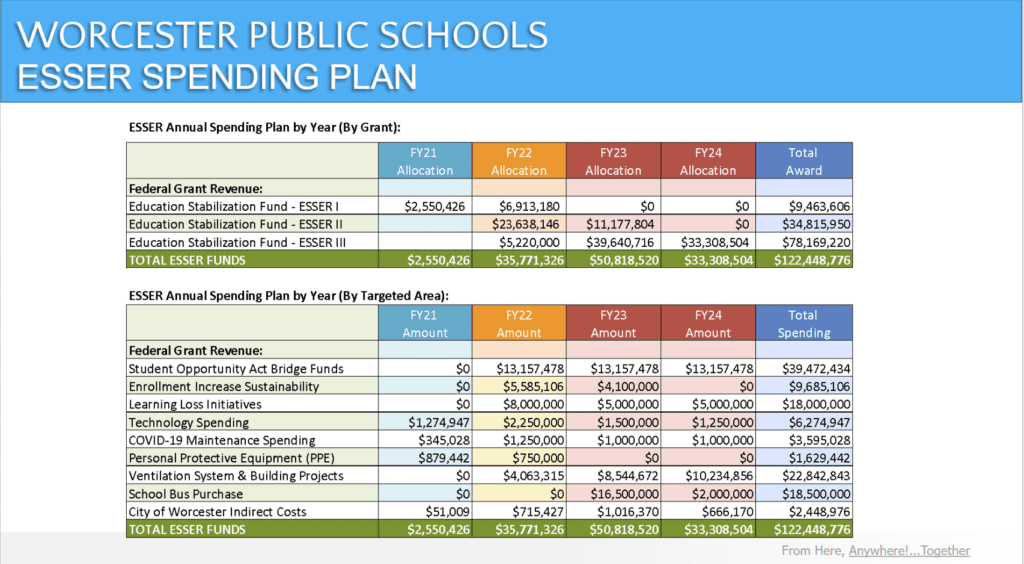
According to Consalvo, her district used federal funding to bridge funding for the state’s Student Opportunity Act, stabilize funding because of changes in enrollment, upgrade and maintain ventilation systems in 44 schools, address learning loss through summer school and after-school programs, purchase personal protective equipment and technology, and acquire a fleet of new yellow school buses.
The district, which had previously contracted for school bus services, received permission to purchase 165 school buses.

“It’s been an absolute success,” Consalvo said of this one-time investment.
The upsides of investments made possible by the pandemic relief funding are held in tension with the reality of the federal funding cliff for both leaders in districts and the researchers watching this unfold.
“As school district leaders look to their 2024 budgets and beyond,” says a report called “Up in the Air” by the Wisconsin Policy Forum, “many see that a key lifeline is fraying and about to break.”
Editor’s Note: Mebane Rash is a past president of the GRA.



